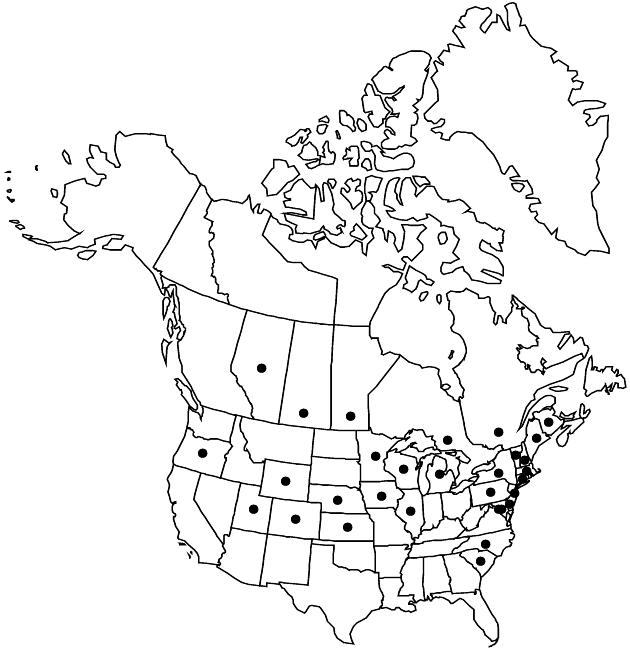Difference between revisions of "Artemisia abrotanum"
Sp. Pl. 2: 845. 1753.
FNA>Volume Importer |
imported>Volume Importer |
||
| (5 intermediate revisions by 2 users not shown) | |||
| Line 8: | Line 8: | ||
}} | }} | ||
|common_names=Southernwood;lad’s love;old man;armoise aurone | |common_names=Southernwood;lad’s love;old man;armoise aurone | ||
| + | |special_status={{Treatment/ID/Special_status | ||
| + | |code=I | ||
| + | |label=Introduced | ||
| + | }} | ||
|basionyms= | |basionyms= | ||
|synonyms= | |synonyms= | ||
| Line 24: | Line 28: | ||
|elevation=0–3000 m | |elevation=0–3000 m | ||
|distribution=Alta.;Man.;N.B.;Ont.;Que.;Sask.;Colo.;Conn.;Del.;D.C.;Ill.;Iowa;Kans.;Maine;Md.;Mass.;Mich.;Minn.;Nebr.;N.H.;N.J.;N.Y.;N.C.;Oreg.;Pa.;S.C.;Utah;Vt.;Wis.;Wyo.;Eurasia;Africa. | |distribution=Alta.;Man.;N.B.;Ont.;Que.;Sask.;Colo.;Conn.;Del.;D.C.;Ill.;Iowa;Kans.;Maine;Md.;Mass.;Mich.;Minn.;Nebr.;N.H.;N.J.;N.Y.;N.C.;Oreg.;Pa.;S.C.;Utah;Vt.;Wis.;Wyo.;Eurasia;Africa. | ||
| + | |introduced=true | ||
|discussion=<p><i>Artemisia abrotanum</i> has been widely cultivated in gardens for old-time uses such as a fly and parasite repellent. It has had a renewed popularity in xeriscape gardening; it is drought tolerant and can fill difficult garden spaces (e.g., dry rocky slopes). Reports of naturalization may be exaggerated; it is not known to become weedy in any of its known locations in North America.</p> | |discussion=<p><i>Artemisia abrotanum</i> has been widely cultivated in gardens for old-time uses such as a fly and parasite repellent. It has had a renewed popularity in xeriscape gardening; it is drought tolerant and can fill difficult garden spaces (e.g., dry rocky slopes). Reports of naturalization may be exaggerated; it is not known to become weedy in any of its known locations in North America.</p> | ||
|tables= | |tables= | ||
| Line 33: | Line 38: | ||
-->{{#Taxon: | -->{{#Taxon: | ||
name=Artemisia abrotanum | name=Artemisia abrotanum | ||
| − | |||
|authority=Linnaeus | |authority=Linnaeus | ||
|rank=species | |rank=species | ||
| Line 48: | Line 52: | ||
|publication title=Sp. Pl. | |publication title=Sp. Pl. | ||
|publication year=1753 | |publication year=1753 | ||
| − | |special status= | + | |special status=Introduced |
| − | |source xml=https:// | + | |source xml=https://bitbucket.org/aafc-mbb/fna-data-curation/src/2e0870ddd59836b60bcf96646a41e87ea5a5943a/coarse_grained_fna_xml/V19-20-21/V19_891.xml |
|tribe=Asteraceae tribe Anthemideae | |tribe=Asteraceae tribe Anthemideae | ||
|genus=Artemisia | |genus=Artemisia | ||
Latest revision as of 19:57, 5 November 2020
Perennials or subshrubs, 50–130(–170) cm (not cespitose), aromatic (roots thick, woody). Stems relatively numerous, erect, brown, branched, (woody, brittle), glabrous or sparsely hairy. Leaves cauline, dark green; blades broadly ovate, (2–)3–6 × 0.02–0.15 cm, 2–3-pinnatifid (lobes linear or filiform), faces sparsely hairy (abaxial) or glabrous (adaxial). Heads (nodding at maturity) in open, widely branched arrays 10–30 × 2–10 cm. Involucres ovoid, (1–)2–3.5 × (1–)2–2.5 mm. Phyllaries oblong-elliptic, sparsely hairy. Florets: pistillate 4–8(–15); bisexual 14–16(–20); corollas yellow, 0.5–1 mm, glandular. Cypselae (light brown) ellipsoid (2–5-angled, flattened, furrowed), 0.5–1 mm, glabrous. 2n = 18.
Phenology: Flowering late summer–fall.
Habitat: Waste places
Elevation: 0–3000 m
Distribution

Introduced; Alta., Man., N.B., Ont., Que., Sask., Colo., Conn., Del., D.C., Ill., Iowa, Kans., Maine, Md., Mass., Mich., Minn., Nebr., N.H., N.J., N.Y., N.C., Oreg., Pa., S.C., Utah, Vt., Wis., Wyo., Eurasia, Africa.
Discussion
Artemisia abrotanum has been widely cultivated in gardens for old-time uses such as a fly and parasite repellent. It has had a renewed popularity in xeriscape gardening; it is drought tolerant and can fill difficult garden spaces (e.g., dry rocky slopes). Reports of naturalization may be exaggerated; it is not known to become weedy in any of its known locations in North America.
Selected References
None.